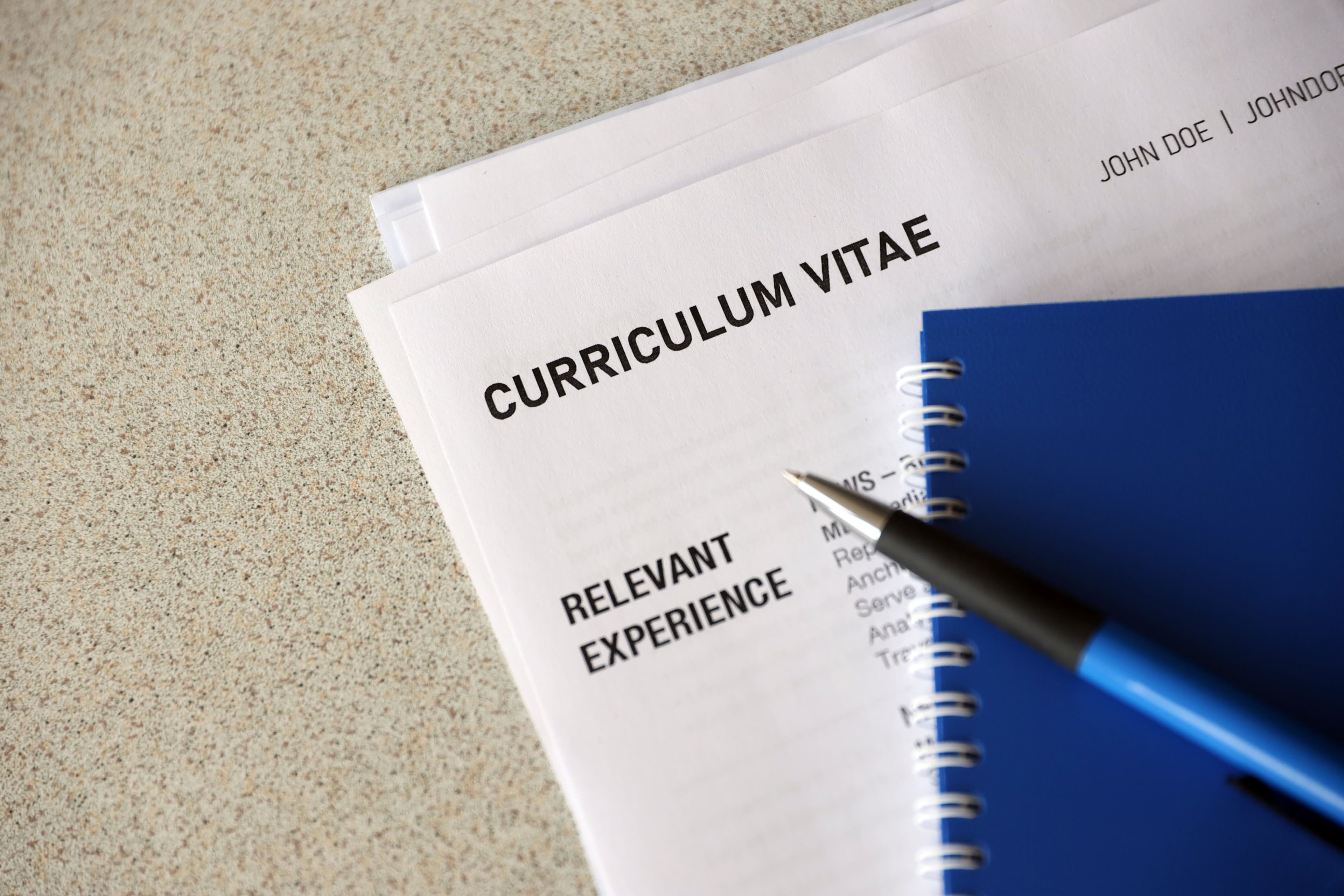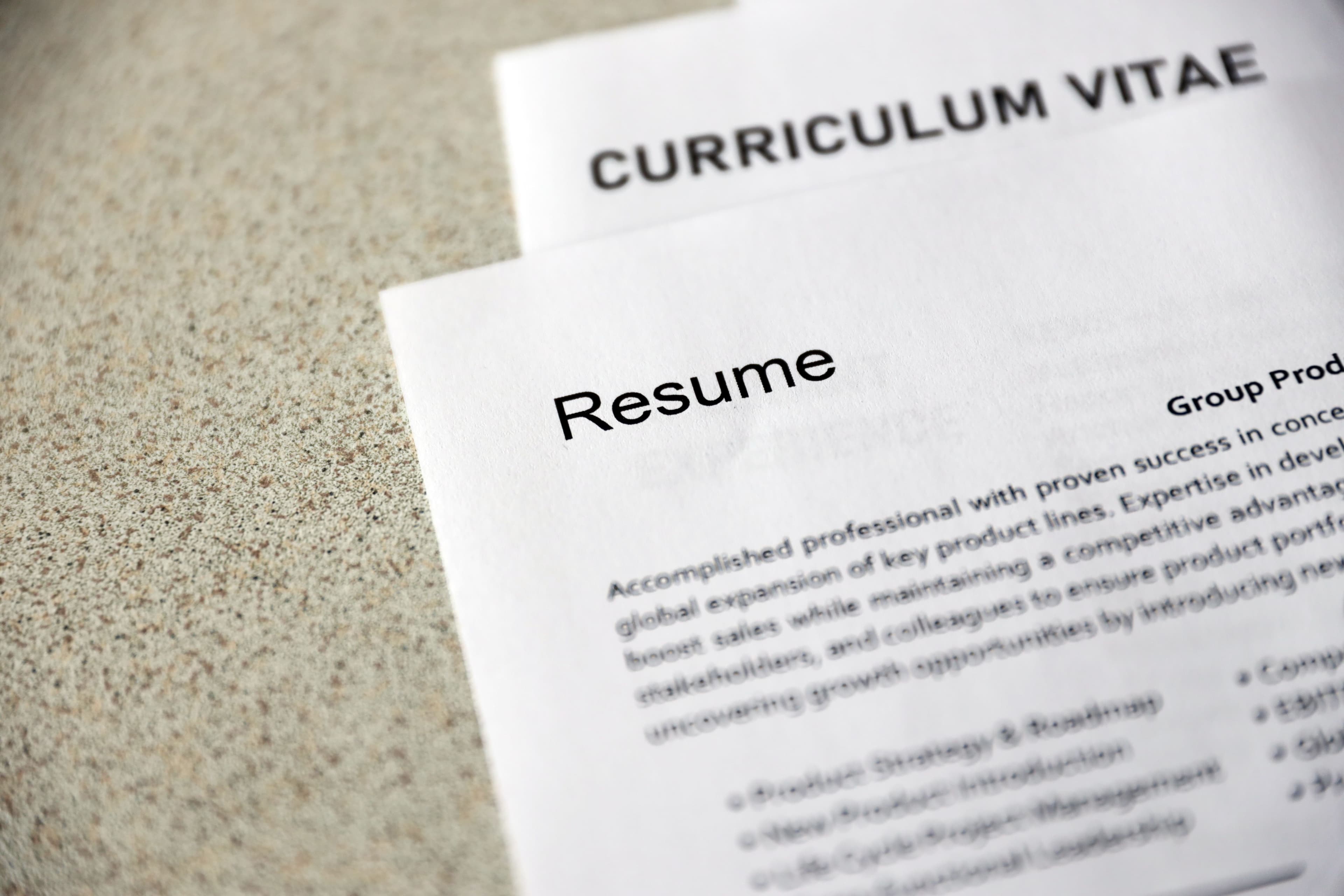How to Write a CV
03.16.2025
Job Resources

A CV is a living document that reflects the developments in your academic and professional career, one that evolves as you gain new experiences, publications, and accomplishments. It should be updated frequently to remain current and comprehensive.
Whether you're applying for a position in academia, pursuing graduate studies, or seeking a professional role in certain fields, a well-crafted CV can make the difference between landing an interview or being overlooked.
In this comprehensive guide, we'll walk through everything you need to know about how to write a CV — from understanding the fundamental structure to tailoring your document for specific opportunities. We'll cover strategies for those just starting their careers, guidance for graduate school applications, and techniques to highlight your strengths even without extensive experience.
By the end, you'll have the knowledge and tools to craft a CV that showcases your unique qualifications and helps you stand out from the crowd.
Understanding CV Basics
Before diving into the specifics of crafting your CV, it's essential to understand what makes this document different from other application materials and when it's most appropriate to use.
A curriculum vitae, Latin for "course of life," provides a detailed overview of your academic and professional history. Unlike how you write a resume, which typically focuses on recent and relevant professional experience in a concise format, a CV is more comprehensive and can span multiple pages, especially as your career progresses.
In the United States, CVs are mostly used for academic, scientific, medical, or research positions, as well as for applications to graduate or professional programs. They emphasize educational achievements, research experience, publications, presentations, and other scholarly activities.
The standard CV structure includes several key sections, though the specific order may vary depending on your field and the position you're applying for:
- Contact information
- Personal statement or profile
- Education history
- Professional experience
- Skills and qualifications
- Publications and research
- Awards and achievements
- References
Length considerations vary by region and purpose. Academic CVs are typically more extensive, often running several pages to include comprehensive publication lists and research details. For industry positions, even when a CV is requested rather than a resume, concision remains important — aim for 2-3 pages maximum, focusing on the most relevant information.
It’s important to understand that there’s no single standard format for a CV. Best practices vary by discipline, and a successful CV is one that conforms to the expectations within your specific field. To understand these expectations, you should collect and study CVs from successful individuals in your discipline, particularly those who have recently been on the job market. Building your career foundation through strategic relationships is as important in academia as it is in industry.
Understanding these basics provides the foundation for creating a document that meets the expectations of your potential employers or academic institutions.
How to Write a Good CV: Overview of Essential Sections
Writing a good CV is all about paying careful attention to the details — from the contact information at the top to the references at the end. Each section serves a specific purpose in showcasing your qualifications and should be thoughtfully developed.
1. Contact Information and Header
Your CV should begin with clear, professional contact information. Include your full name, phone number, email address (preferably professional rather than playful), and location (city and state/country, not your full address).
For academic CVs, you can also include your institutional affiliation and professional profiles like LinkedIn or academic networks like ResearchGate and ORCID.
2. CV Profile/Personal Statement
A strong profile or personal statement acts as an executive summary of your CV. This 3-5 sentence paragraph should concisely highlight your qualifications, career goals, and what makes you uniquely valuable.
Focus on your professional identity, key strengths, and most significant achievements. Here’s an example from a microbiologist:
"Dedicated molecular biologist with five years of research experience in gene editing technologies. Specialized in CRISPR-Cas9 applications with a track record of publishing in peer-reviewed journals. Seeking to leverage extensive laboratory skills and collaborative research experience to contribute to innovative genetic therapy development."
3. Education History
Your education section should list your academic credentials in reverse chronological order, beginning with your highest or most recent degree. When it comes to how to write your degree on a CV, remember to include your:
- Degree name and field (e.g., "Bachelor of Science in Computer Engineering")
- Institution name and location
- Graduation date (month and year)
- Honors or distinctions (such as cum laude, magna cum laude, or summa cum laude)
- Relevant coursework (especially for recent graduates)
- GPA (if impressive, typically 3.5 or above)
When writing your degree, make sure you use the full, official name rather than abbreviations (e.g., "Master of Business Administration" rather than "MBA"). This removes ambiguity, especially for international applications where degree abbreviations might differ.
For academic CVs, this section often includes dissertation or thesis titles and the names of your advisors. Don't include high school information, and generally, focus only on your postsecondary education.
4. Work Experience
Detail your professional experiences in reverse chronological order, focusing on accomplishments rather than mere responsibilities. For each position, include your:
- Job title
- Organization name and location
- Employment dates (month and year)
- 3-5 bullet points highlighting key achievements, using strong action verbs and quantifiable results where possible
If you’re relevant experience is all in academia, you might want to think about titling this section "Research Experience" or "Teaching Experience" to better reflect the nature of your work.
As for actually writing descriptions of your work experience, consider these two key techniques highlighted by Purdue University’s Online Writing Lab:
- Gapping: Use incomplete sentences to present information concisely. For example, instead of "I taught introductory biology for three semesters," write "Taught introductory biology (3 semesters)."
- Parallelism: Maintain consistent grammatical structure throughout your descriptions. If you begin one bullet point with a past tense verb, begin all of them with past tense verbs.
Unlike resumes, academic CVs often require less detailed descriptions of work, particularly for teaching positions where the responsibilities are generally understood by the academic audience. That said, unique positions or responsibilities should still be explained.
5. Skills and Qualifications
List relevant technical skills, language proficiencies, and specialized knowledge areas. Group skills by category (e.g., laboratory techniques, programming languages, analytical methods) for easier readability. Be specific about your proficiency level, especially for languages and technical skills.
6. Awards and Achievements
Include honors, grants, scholarships, and other recognitions that demonstrate your excellence. For each, specify the name of the award, the granting organization, and the year received. Brief descriptions can provide context if the significance isn't immediately obvious.
7. Publications and Research
For academic CVs, this section is crucial. List your publications using the citation format standard in your field (APA, MLA, Chicago, etc.). Include all authors — don't replace others with "et al." — the publication year, article title, journal name, volume, issue, and page numbers.
If you have work at different stages of the publication process, create clear subsections for "Published Works," "Works in Press," "Works Under Review," and "Works in Progress." And of course, be honest about the status of each work and your level of contribution.
8. References
Unlike the “upon request” approach used in modern resumes, CVs traditionally include references directly on the document. List 3-5 professional references with their names, titles, organizations, and contact information. Always obtain permission before listing someone as a reference. For non-academic positions, you might instead note "References available upon request" to save space.
The order of sections after education can vary by discipline. If your field has established conventions, follow them. If not, prioritize the sections that highlight your greatest strengths for the specific position. For instance, if applying to a research-focused institution, place publications and research experience early in your CV. For teaching-centric positions, lead with your teaching experience after education.
Writing a CV for Specific Situations
Not everyone follows the same career discover path, including in academia. Different career stages and goals require distinct approaches to CV writing. Let's examine strategies for tailoring your CV to specific situations.
How to Write a CV for Graduate School
When writing a CV for graduate school programs, you should emphasize academic achievements and research potential. That means focusing on:
- Education history with detailed coursework relevant to your intended field of study
- Research experience, including methodologies and key findings
- Academic publications or presentations, even if they're from undergraduate work
- Relevant technical or analytical skills
- Academic honors and awards
- Strong letters of recommendation (mentioned in your references section)
Highlight experiences that demonstrate your capacity for independent research, analytical thinking, and scholarly writing. Include any conference presentations, poster sessions, or academic competitions that showcase your engagement with the field.
Graduate school admission committees are particularly interested in your potential for academic success, so emphasize any research-related experiences, even small undergraduate projects, that demonstrate your capabilities and interests.
How to Write a Graduate CV
Recent graduates face the challenge of limited professional experience. Your CV should leverage academic achievements while demonstrating transferable skills:
- Emphasize educational achievements, including relevant projects, thesis work, and specialized coursework
- Showcase internships, part-time work, volunteer experiences, and extracurricular activities that developed relevant skills
- Highlight technical competencies, language proficiencies, and other marketable skills acquired during your studies
- Include academic achievements that demonstrate discipline, work ethic, and excellence
Remember that many skills developed during your education—critical thinking, research methods, project management, and specialized knowledge—are valuable in professional contexts.
As a recent graduate, your education section will usually come before work experience, and you may want to include more details about academic projects and achievements since your work history may be limited.
How to Write a CV as a Student
As a current student, your CV should balance your academic progress with any professional experiences:
- Lead with education, detailing your degree program, expected graduation date, and notable coursework
- Include relevant academic projects, research assistantships, or significant assignments that showcase your capabilities
- Feature leadership roles in student organizations, volunteer work, or campus involvement
- Highlight internships or part-time positions, emphasizing responsibilities and accomplishments rather than basic duties
- Showcase technical skills, languages, and other competencies that differentiate you
The key is demonstrating potential and transferable skills while honestly acknowledging your early career stage.
Student CVs should emphasize academic achievements and potential, highlighting coursework, projects, and activities that demonstrate your capabilities in your field of interest. Include any publications, presentations, or research experiences, even if they were completed as part of a class project.
How to Write a CV for a Job with No Experience
Even without formal work experience, you've developed valuable skills through education, volunteer work, projects, and other activities:
- Create a robust skills section highlighting technical abilities, soft skills, and knowledge areas
- Emphasize education, including relevant coursework, academic projects, and achievements
- Include unpaid experiences like volunteer work, community service, or leadership in organizations
- Detail relevant projects, whether academic, personal, or collaborative
- Consider adding a summary statement that connects your skills and background to the position requirements
Focus on transferable skills such as communication, teamwork, problem-solving, and organization. Provide concrete examples that demonstrate these capabilities, even if they weren't developed in traditional employment settings.
For those with limited experience, consider organizing your CV by skill sets or competencies rather than chronological work history. This functional approach can help highlight your capabilities rather than your limited experience.
By adapting your CV to your specific situation, you can effectively showcase your strengths while addressing potential concerns about experience or qualifications. Remember that a CV is a living document that will evolve throughout your career—what matters now is presenting your current qualifications in the most compelling way possible.
Learn from Industry and Academia Professionals on the My Career Shop
Learning how to write a good CV is both an art and a science. It requires careful consideration of content, structure, and presentation to showcase your qualifications in the most compelling way.
But it’s also important to remember that it’s just one step in your career journey. You also need to learn how to network, navigate career transitions, and improve your soft skills — among many other things.
My Career Shop exists to help you build those skills and fast-track your career with access to insights and advice from professionals across industries. Check out the My Career Shop podcast and start accelerating your growth today.
Subscribe to My Career Shop Content
Stay up to date with Blog Posts and Podcast Episodes!
Your One Stop Shop For All Career Resources
Whether you are exploring new career paths, building your resume, or preparing for your next opportunity, our tools, templates, and guidance are designed to help you navigate your career journey with clarity and confidence.
Copyright © 2025 My Career Shop. All rights reserved.

























